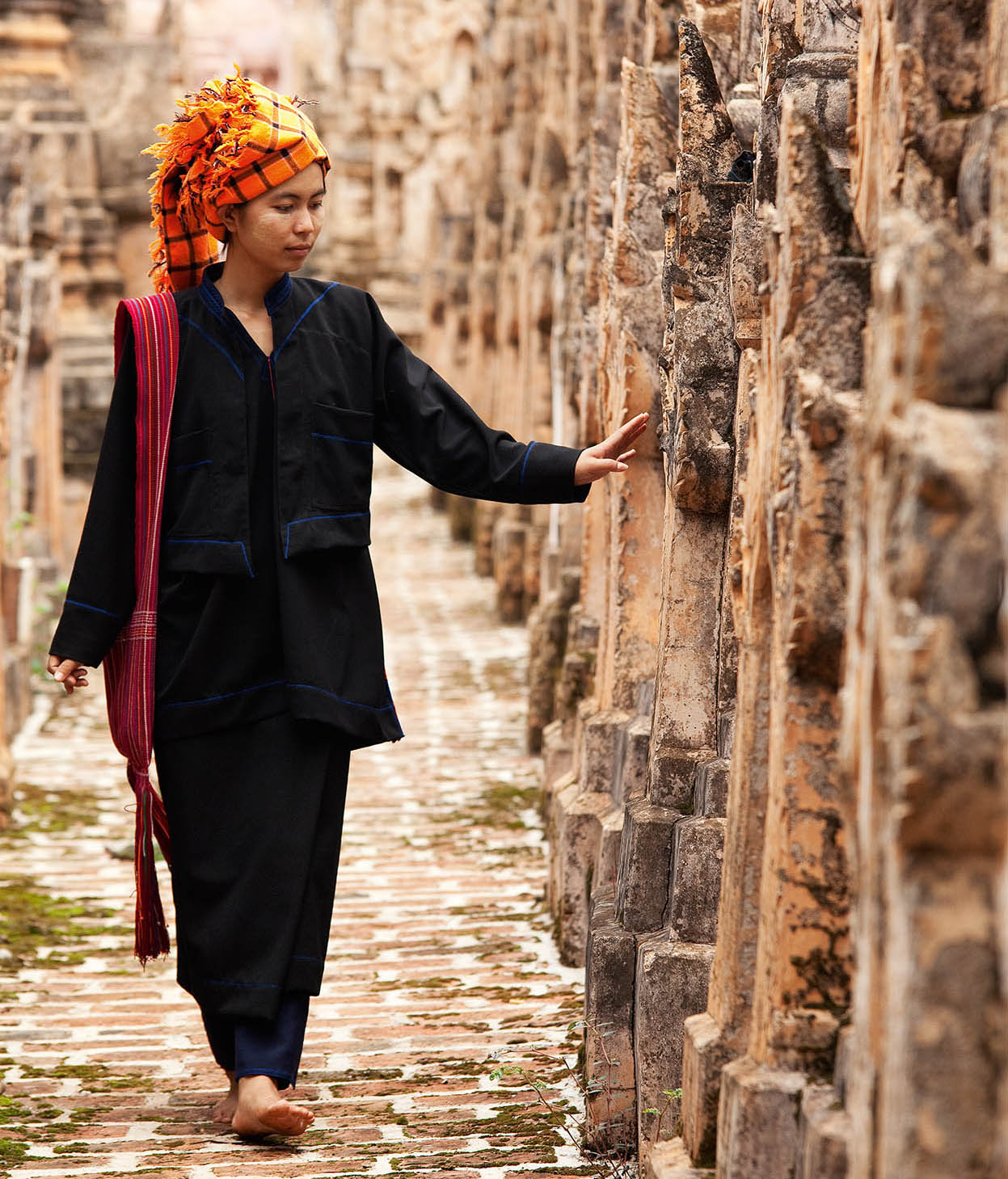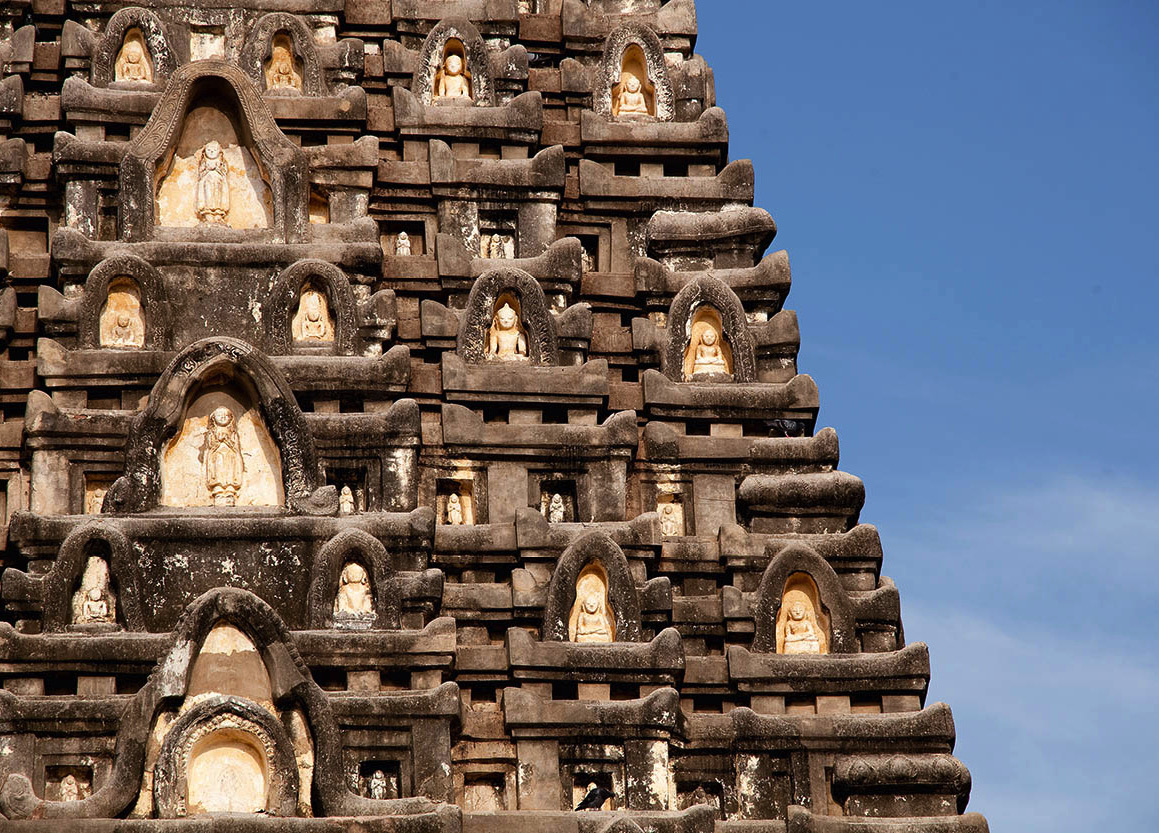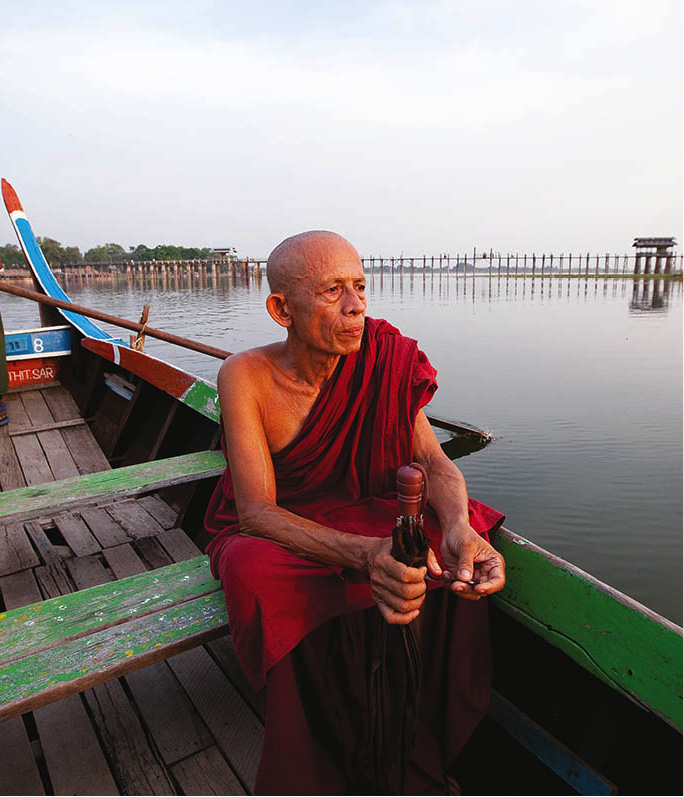Burma – or Myanmar as it was renamed in 1989 – is the most enigmatic country in Southeast Asia. Enfolded by jungle-clad hills, its central river valleys were for centuries the heartland of a classical civilisation little known by the outside world – a tantalisingly exotic culture of gilded stupas, red-robed monks and elaborately carved teak palaces. Not until the British invasion of 1885 did foreign traders penetrate far beyond its tropical coastline. Since then, constant wars, civil unrest, devastating cyclones and – in recent decades – chronic economic mismanagement by a repressive military junta have compounded the country’s isolation.

Local Pa-O guide walking amongst the ancient pagodas of Kakku .
Corrie Wingate/Apa Publications
However, the democratic reforms which began following Aung San Suu Kyi’s release from house arrest in 2010 are now slowly but steadily transforming the face of this enigmatic nation. With economic sanctions eased and long-running civil wars mostly at an end, the future is looking bright.
Even so, after fifty years in the economic doldrums Myanmar remains locked in a kind of time warp. The former capital, Yangon (Rangoon), may be sprouting skyscrapers, but elsewhere people live in dilapidated low-rise towns and villages made of mud brick and bamboo. Bullocks plough the paddy fields; horse-carts outnumber cars.

Stupa detail, Mahabodhi temple, Bagan.
Corrie Wingate/Apa Publications
From a foreign traveller’s point of view, this quirky, hand-made, old-world atmosphere makes Myanmar a charismatic place to travel. Traditions of the past remain very much to the fore. Walking the streets of Mandalay in the early morning, you’ll see hundreds of shaven-headed monks queuing for alms, young women with fragrant thanaka paste smeared over their faces, elderly vegetable sellers puffing on oversized cheroots, and all manner of exotic headgear, from conical straw hats to burgundy turbans. Beautifully patterned batik htameins and longyis (sarongs) are worn by nearly all women – and most men. The everyday smells in the street can be just as strikingly unfamiliar, along with the wonderful flavours of Burmese cooking, with its pungent mix of spices, seafood sauces, limes and fresh green leaves.

A monk crosses Taungthaman lake by boat.
Corrie Wingate/Apa Publications
Just how well this unique way of life will withstand the onslaught of modernity that’s waiting in the wings remains to be seen. But for the time being, despite its manifold problems, Myanmar is ripe for exploration, with more world-class monuments than you could possibly see on a 28-day tourist visa, a wealth of vibrant arts and crafts traditions and, not least, inhabitants whose resilience, gentleness and hospitable attitude to foreigners impress every visitor to the country.
Note: we have used the name Myanmar instead of Burma, except for historical references. The adjective “Burmese” has been retained throughout.